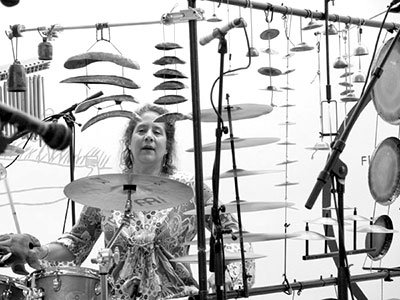It all began when my colleague Arno asked me about a camera. And this time his question was about a real camera, a Sony A6000.
Well, I told him, that one is at least as good as mine – its autofocus should be way faster especially on moving subjects, the sensor is APS-C, so a bit bigger, dynamic range could be better, whatever – you know the drill. No built in image stabilization was the only contra argument I could memorize without comparing actual spec sheets. Oh, and – how many – 20 Megapixels? Anyhow, more than enough of these as well. The fact that it’s not too expensive – in the same ballpark like an E-M10 or -Mark2 – was an additional plus. Everybody’s darling, I told him, and that he should get one if he saw a good offer.
A week went by, then another one, and finally I asked if he bought it, and he said no. He still wanted to make financial plans for this year together with his CFO 😉
In the end I decided to lend him my Olympus E-PL5 together with its kit zoom and the VF-2 electronic viewfinder. That would still leave the E-M10 in my bag, so I could live with that for a while.
Well, it never actually happened. He was about to take the camera – which he put into a bag first – into his car after having a smoke together with me, but he forgot to take his car keys, so we stood outside, smoking, bag with camera in his hand.
“See?”, he asked, adding “I guess I would never take that camera with me, it’s just too big, you cannot put it into a pocket, so it would probably stay at home all of the time”.
Ok I thought, thinking about alternatives. If my camera was out of the game, then so was the A6000 he had asked about, and I recommended a Sony RX-100 instead.
“Ask Basti”, I said, “he has one. First generation, they should be quite affordable by now”. Short internet check when we were up again – yep, slightly above 300€, fits. And Basti offered to bring his camera as well, so Arno could have a look before making a decision.
And that is what happened today. “Perfect”, was Arno’s comment, “that is the camera I want”. And so during our lunch break we took some photos:

Cameraman (my colleague Arno, trying Basti’s – or Nadine’s? – camera on me)
He really seemed to like that thing. While I took one photo of him, he took three of me (and several more):



Don’t directly compare these with the one I took. The Sony pictures are out of camera, while I “developed” mine from the Olympus raw file (.orf). Plus I had the 45mm/1.8 M.Zuiko lens on my camera – the Sony has a very good Zeiss zoom, but it can’t be opened that wide – and it’s of course way shorter to fit the 1″ sensor inside that camera.
Still, pretty good detail as far as I can tell – and these should have detail, 20 Megapixels of them. More than enough, like I told him.
Always glad if I can help. And thanks to Nadine and Basti who helped as well.
Thanks for reading.
















